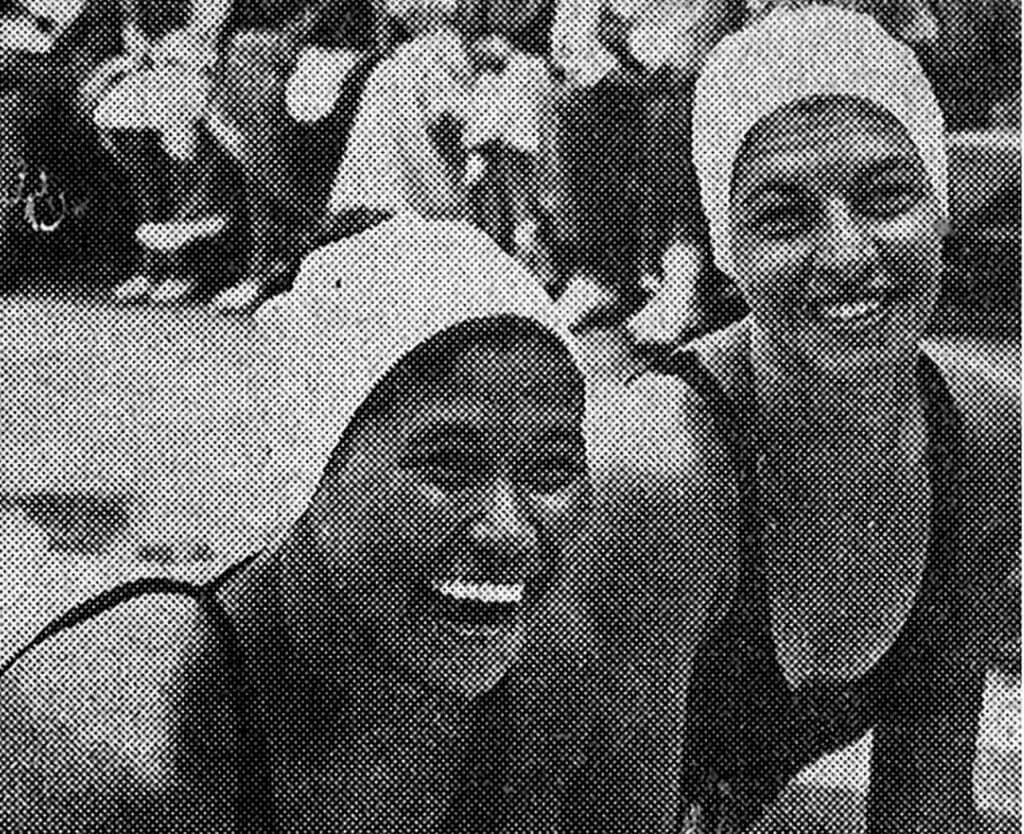1952 Olympic Bronze Medalist Evelyn Toque Kawamoto-Kono Passes Away

Evelyn Tokue Kawamoto-Kono, a two-time Olympic Bronze Medalist at the 1952 Helsinki Olympic Games, passed away in Hawaii on January 22, at the age of 83. Born on September 17, 1933, Evelyn had been one of the few remaining figures from the remarkable 2nd wave of Hawaiian swimming greats immortalized in Julie Checkoway’s remarkable book, “The Three Year Swim Club: The Untold Story of Maui’s Sugar Ditch Kids and Their Quest for Olympic Glory.”
Brought up in poverty by a single mom who took in laundry to make ends meet, Evelyn joined Sakamoto’s program at the age of 9. By the age of 13, she was swimming seven days a week and was breaking local records at McKinley High School. She participated in the 1948 Olympic Trials at the age of 14 and burst onto the national scene in 1949, when, as a “Chunky” fifteen year-old, she broke the American record in the women’s 300 meter Individual Medley (IM) and the 200 meter breaststroke on the same day. A month later, she won both events at the US Nationals, in San Antonio, Texas. Over the next three years, Evelyn dominated the non-Olympic IM event and although she lost her national title in the breaststroke to Penny Pence (Taylor) in 1951, she became the nation’s top female distance freestyler.
On the final day of the 1952 U.S. Women’s Olympic Trials, held at the Broadripple Pool, in Indianapolis, Ind., a sellout crowd of more than 3,000 spectators cheered Evelyn on as the 18 year-old University of Hawaii freshman shattered what was considered an “untouchable” American record that had been set by the great Ann Curtis in the 400 meter freestyle at the London Olympic Games.
A month later, in Helsinki, Evelyn broke Curtis’ Olympic record in the 400m freestyle in the preliminary heats, but saw her record erased in the final by Hungary’s Valerie Gyuenge and took the bronze. She won a second bronze medal in the 4 x 100 freestyle relay.
After the Olympic Games, Evelyn swam for Penn Hall Jr. College in Chambersburg, Pennsylvania and was working as a secretary for Pan American Airlines in 1956, when she married her childhood sweetheart, Ford Kono, upon his graduation from Ohio State. Kono was another protege of coach Sakamoto and had won 2 Olympic Gold medals in Helsinki, in the 1500m free and 4 x 200m freestyle relay, and a silver in the 400m freestyle. Several months after their June wedding, Ford won a second silver medal in the 4 x 200 freestyle relay at the Melbourne Olympic Games.
At the age of 30, Evelyn returned to the University of Hawaii to complete her degree while juggling work and family responsibilities. In a 2003 interview, with the Honolulu Star Advertiser, she recalled, “It was so tough because I had to take care of the family and help my husband in his business. But I didn’t waver from my goal. I had to work very hard, but it was worth it.” She became an elementary school teacher before retiring.
According to her daughter, Bonnie Shishido, Evelyn was modest to the extreme and rarely spoke of the swimming career that took her all across America, Asia and Europe. Or, about an event in 1950 that would have future implications for the history of judging and timing in swimming. It was at the 1950 Women’s nationals in High Point, NC, when Evelyn finished in a tie for first place with Marge Hulton, of Atlantic City, N.J., in the 200 meter breast stroke (butterfly). With the three timers for each swimmer showing identical times and the judges declaring each the winner, it was the first “dead heat” in the history of AAU swimming. Rather than giving both women gold medals, as is the practice today, it was decided to create a special medal that was half gold and half silver to the winners. The race also led R. Max Ritter, the leader of American swimming at the time, to develop the first electronic judging machine, which led, in time to the development of the modern touch pad. Evelyn donated this unique medal to the ISHOF museum when her husband Ford was inducted into the ISHOF in 1972. This medal is currently on display along with images of the photo finish and the role it played in the development of timing/judging systems and its place in history alongside the Devitt-Larson (1960) and Phelps-Cavic (2008) controversies.
Memorial services or plans have not been announced.
Press release courtesy of the International Swimming Hall of Fame.




I remember Ford Kono from the Helsinki Olympic Games.
For another famous/rule inducing finish remember Gunnar Larson (sp?) / Tim McKee 400 IM results from Munich where pads were in use and the differential was 7/1000 (? ) for Larson, leading to setting new rule where difference of less than 1/100, even if no dispute over accuracy, were no longer recognized as a basis to separate placements.
What a lovely piece about Evelyn Kawamoto. I was sorry never to meet her, as she was ill in her last years while I was writing the 3YSC book.